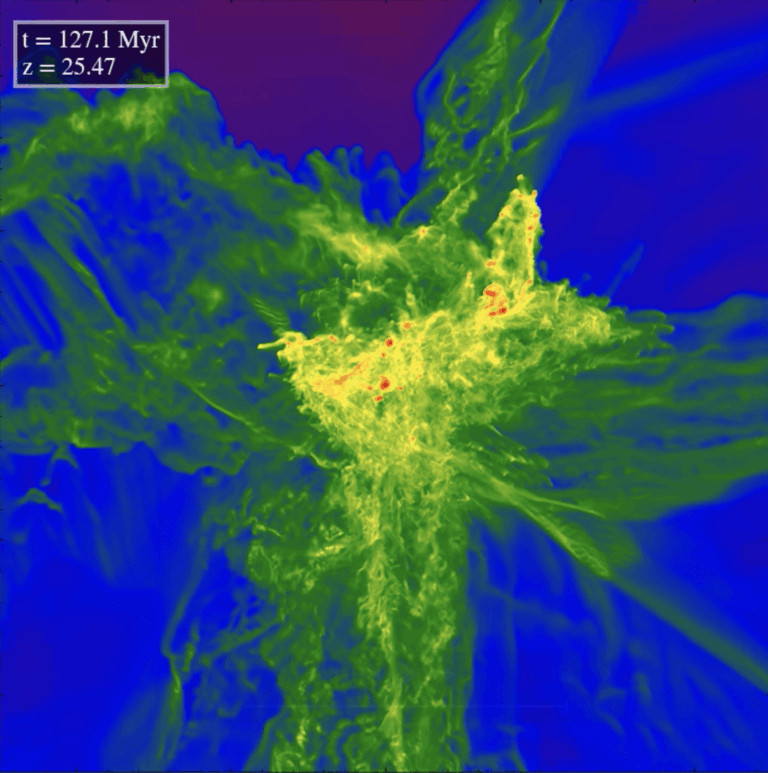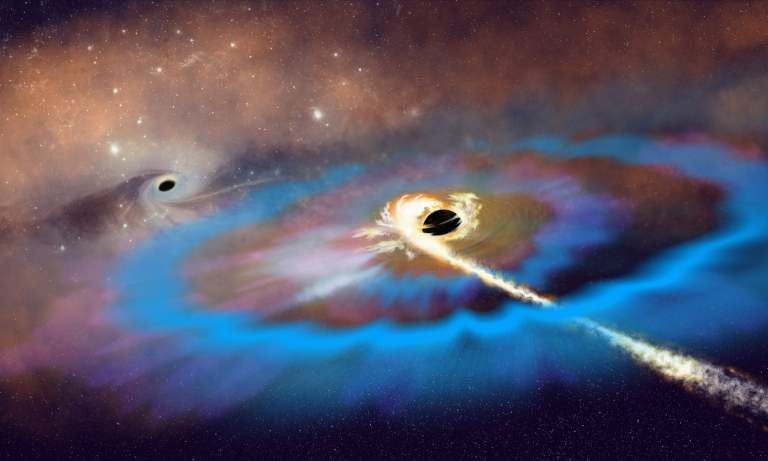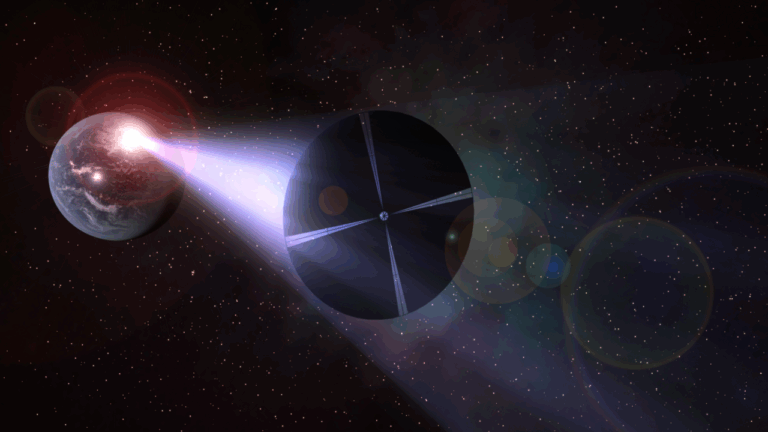Key Takeaways:
The galaxy, SAGE0536AGN, was initially discovered with NASA’s Spitzer Space Telescope in infrared light. Thought to be at least 9 billion years old, it contains an active galactic nucleus (AGN), an incredibly bright object resulting from the accretion of gas by a central supermassive black hole. The gas is accelerated to high velocities due to the black hole’s immense gravitational field, causing this gas to emit light.
The team has now also confirmed the presence of the black hole by measuring the speed of the gas moving around it. Using the Southern African Large Telescope, the scientists observed that an emission line of hydrogen in the galaxy spectrum where light is dispersed into its different colors — a similar effect is seen using a prism — is broadened through the Doppler effect where the wavelength — color — of light from objects is blue- or red-shifted depending on whether they are moving towards or away from us. The degree of broadening implies that the gas is moving around at high speed, a result of the strong gravitational field of the black hole.
These data have been used to calculate the black hole’s mass: the more massive the black hole, the broader the emission line. The black hole in SAGE0536AGN was found to be 350 million times the mass of the Sun. But the mass of the galaxy itself, obtained through measurements of the movement of its stars, has been calculated to be 25 billion solar masses. This is 70 times larger than that of the black hole, but the black hole is still 30 times larger than expected for this size of galaxy.
“Galaxies have a vast mass and so do the black holes in their cores. This one though is really too big for its boots — it simply shouldn’t be possible for it to be so large,” said Jacco van Loon from Keele University and the lead author on the new paper.
In ordinary galaxies the black hole would grow at the same rate as the galaxy, but in SAGE0536AGN the black hole has grown much faster, or the galaxy stopped growing prematurely. Because this galaxy was found by accident, there may be more such objects waiting to be discovered. Time will tell whether SAGE0536AGN really is an oddball or simply the first in a new class of galaxies.










